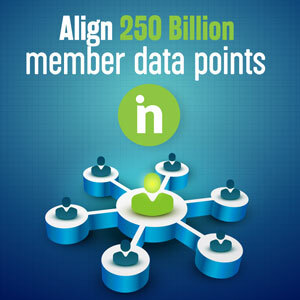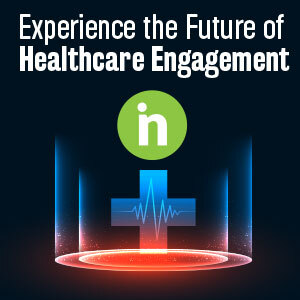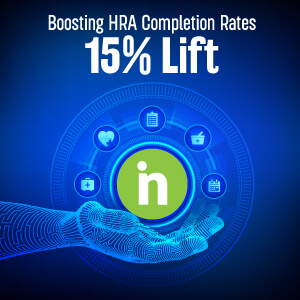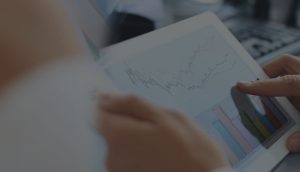Timeless Thinking: There’s a Digital Pig Headed for Your Python
This 2016 article from our Founder & CEO, Enam Noor, foresaw the digital transformation in healthcare engagement. Fast forward to today, and Insightin Health is not just following the trend but setting the pace…
If you still think of “senior citizens” as a group mired in an analog mindset, think again. Within five years many of those who will fit the definition of “seniors” are going to start looking like “millennials”. That’s because the leading edge of the Baby Boom, the 76 million people in the US born between 1946 and 1964, are going to become your prospective customers as they begin to seek Medicare supplemental coverage in increasingly larger numbers.
Long referred to by generational marketers as the “pig in the python”, Boomers have engaged in active lifestyles and successfully been employed in an increasingly digital economy. While Millennials can be very smug about how far ahead on the digital curve they are, the fact is that the boomer generation has seen- and dealt with- much more change resulting from the digital revolution than millennials. Boomers have experienced first-hand the benefits of the digital miracle. As a result they will expect nothing but the best and the latest (technology?) from any brand competing for a share of their retirement nest eggs.
The digital “pig in the python” is going to expect instant online access, articulate dashboards on their coverage capabilities, and the ability to shop during an enrollment period from their smartphone and tablet. And, these new skills create the opportunity for your brand to start a dialogue with this largest generation in a way that was not possible with their predecessors. Is your brand ready?
How Does The Pig in the Python Behave Online?
Specifically, how do older boomers behave compared to the paradigm of connectedness presented by Millennials? Older boomers are the 57-65 year olds poised to become your prospective customer. Millennials are digitally intensive 18-34 year olds.
BOOMERS GO ONLINE OFTEN AND COMMUNICATE ALL THE TIME
According to the Pew Internet Research Project almost 80% of older boomers are regular users of the Internet with almost 60% of them having broadband access at home. Pew also found that while 94% of millennials go online almost every day, older boomers are not far behind at 82%. About 90% of both groups use email.
OLDER BOOMERS LOOK FOR HEALTH INFORMATION AND THEY OFTEN BUY ONLINE
Pew found that older boomers are heavy users of search engines (88%) only slightly behind Millennials (95%). Almost as many older boomers use the internet to look for information on their health (69%) compared to 77% of millennials. But surprisingly, older boomers are slightly more likely to actually buy products online (78%) than the Millennial group (73%).
BOOMERS ARE STEADILY ACQUIRING “CONNECTED” BEHAVIORS
There are some Millennial-like behaviors that older boomers have not widely adopted yet but, they are steadily catching up. According to Nielsen, the 18-34 group watches between 2 and 3 hours of video on smartphones every month. Boomers 50-64 years of age watch just more than an hour on average. Younger boomers are in the 90-minute range. And they will be watching more.
AGING-IN CUSTOMERS WILL BE INCREASINGLY ONLINE, ABLE TO COMMUNICATE AND READY TO SHOP
The data leaves little doubt that the preference for paper-driven communication is going to evolve and, given the size of the coming baby boom, the change will come quickly. Those boomers entering this market over the next five to ten years will be digitally literate, accustomed to finding answers on topics relevant to them, and capable of conducting online conversations and transactions. Communication with 70+ customers is now dominated by their preference for paper in the form of letters, brochures, and forms. Soon that will change as more baby boomers qualify for Medicare coverage and demand greater digital access to a depth of data they have become accustomed to in their work life. Boomers won’t be as content to wait for a letter. They’ll expect customer service reps to know everything about your coverage offerings as well as have complete access to their personal data. They won’t be satisfied until they can discuss in detail all their individual options are under your coverage structure.
Broadened digital literacy across the customer base opens the door for refining and automating a personal dialogue about personal health in ways just not possible in a paper driven environment. This gives your brand the opportunity to act as an ongoing partner in each of your customer’s continued good health.
CREATE TRUST WITH PERSONALIZED PROGRAMS
Most importantly, you now have the opportunity to build a year-round relationship through an on-going dialogue with your customers via personalized programs. Regular, relevant, online communication allows you to build loyalty among current customers, learn about customer preferences to help you win back those that you’ve lost as well as earn the vote of those new to you. Your brand can become an online expert source of basic wellness information for 65+ consumers as well as the experts on how to shop for and select supplemental coverage.
The search experts at Google tell us that searches for healthcare coverage begin early in the calendar year with consumers searching for coverage options and features. Search volume rises dramatically during the Open Enrollment Period when brand-specific searches spike by 30%. Needless to say this also drives up the cost of online advertising during the OEP as well as limiting the opportunity for dialogue.
By establishing brand recognition early in the year with customers and prospects you can chart a different course during the OEP. Your brand and its features no longer needs to be discovered. Relationships you have established earlier in the year can pay off in higher retention rates, more successful win-back programs, and more new customers learning about your coverage options outside the pressure of the OEP deadlines.
How do you prepare?
There are important strategic moves you can make to get ready for this change in the composition and behavior of the 65+ healthcare audience.
- Develop Content and Channel Management Plans: What you have to say on your products and all possible related healthcare coverage issues will need to be developed in detail and put into a flexible and responsive system accessible for any need; web presence, collateral materials, email campaigns, customer service representative dialogue screens, direct mail, blogs, public relations, and social media posts.
- Create Segmented Campaigns: Give your brand a voice in every channel, aimed at every segment of your patient/customer base. Make sure you are saying what your customers want and need to hear where and when they are listening. Make sure that prospects and former customers are included and their issues are being addressed.
- Execute and Report: Establish your teams now with clear responsibilities for not only executing your plans but reporting regularly on results and preparing….?
Enam Noor- Founder & CEO | Insightin Health
July 21, 2016





Leave a Reply